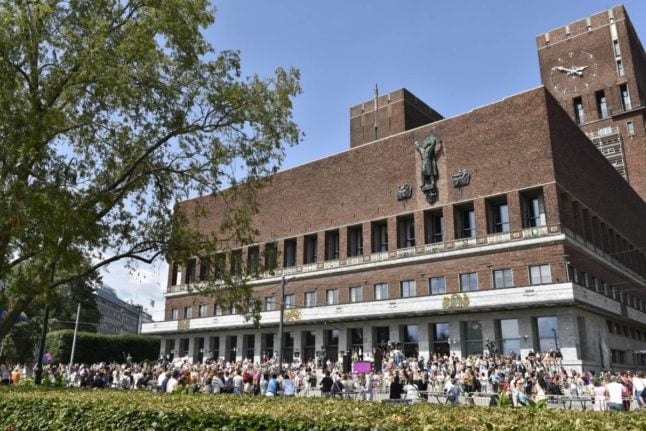Collective bargaining agreements play a pivotal role in regulating salaries and other working conditions in the Norwegian labour market.
These agreements are the result of negotiations between trade unions and employer organisations, shaping the framework that governs employment terms and practices.
READ MORE: What is a Norwegian collective bargaining agreement?
Collective bargaining agreements in Norway are usually negotiated throughout the spring, and negotiations for some of the most prominent sectors regularly make the domestic headlines.
Before the negotiations, unions typically announce what they expect from the year’s talks. This year, employee organisations are focusing on increasing purchasing power and salaries.
Employee side demands
Years of grappling with inflation and rising interest rates have galvanised the Norwegian Confederation of Trade Unions’ (LO) million-strong membership into action.
On Tuesday, LO leader Peggy Hessen Følsvik emphasised the critical importance of a robust wage agreement.
With the Technical Calculation Committee (the government committee tasked with calculating wage and inflation rises) forecasting a 4.1 percent price hike for 2024 recently, surpassing this mark will be seen as essential for unions.
READ MORE: What foreign residents in Norway should know about workers’ unions
The demand put forth by LO for this year’s negotiations is that wage increases must outstrip the rise in prices, thereby ensuring a real improvement in purchasing power.
READ ALSO: Could a long period of stagnant real wages in Norway be about to end?
Furthermore, LO is asking for a wage supplement for the lowest earners and comprehensive reforms in continuing education to address structural inequalities within the Norwegian labour market.
Strike threats
Last year’s interim settlement saw LO take its members on strike. The strike was a success , a wage increase of 5.2 percent was secured, and has bolstered the confederation’s resolve ahead of this year’s negotiations.
On Tuesday, Følsvik declared that LO was ready to strike for a “good and solid” wage increase.
“We are prepared to go on strike to get what is fair, what is right,” she said, according to news bureau NTB.
“We must get our share of the cake. And a fair distribution. Because there is actually room for a good and solid wage settlement. Export revenues are historically high, and the industry is going through good times…
“Those who have helped create this value, LO members, must have their share of the value creation,” the LO chief further said.
After several years of historically high price growth and what Følsvik called a historically aggressive interest rate growth, the feedback from over 1 million LO members is clear.
“After years of high inflation and an increasingly tough interest rate level, increased wages are the most important thing for our members. The requirement is that wages must increase more than the rise in prices. The requirement is increased purchasing power. It will be our task not to disappoint our members,” Hessen Følsvik said.
Fellesforbundet: The will to strike is very strong
In Norway, traditionally, the bargaining round kicks off with the industrial sector, commonly known as the frontline sector (frontfaget) in this context. This sector leads negotiations initially because it’s exposed to competition.
The financial parameters established through negotiations between the LO’s United Federation of Trade Unions (Fellesforbundet) and NHO’s Federation of Norwegian Industries (Norsk Industri) during this settlement will serve as a blueprint for subsequent negotiations.
Fellesforbundet, the second-largest union within LO, is often called the primary trade union in the private sector. Its membership spans various industries, including manufacturing, construction, hospitality, and others.
Teaming up with Parat, part of the Norwegian Confederation of Vocational Unions (YS), Fellesforbundet will assume a crucial role in representing employees during the frontline sector negotiations.
There’s a tradition of minimal striking within frontline professions, as Fellesforbundet leader Jørn Eggum said in late January.
Nevertheless, last year saw an unprecedented strike during interim settlement talks, signalling a potential shift in dynamics.
When questioned about the willingness to strike this year, Eggum underscored the firm resolve among union members, saying that the will to strike is “absolutely present.”
“I think the will to strike is very strong,” Eggum told the newspaper E24.
How Norway’s collective bargaining system works
Pay and rights in Norway are governed by collective agreements (tariffavtaler), which typically have a duration of two years.
Every alternate year, employers and employees engage in renegotiations of the entire collective agreement, known as the main settlement (hovedoppgjøret).
READ ALSO: Why Norway doesn’t have a national minimum wage and how fair pay is ensured
In the periods between main collective settlements, bargaining primarily focuses on pay-related matters, called interim settlements (mellomoppgjør).
However, the 2024 bargaining round involves a main settlement, meaning negotiations will encompass not only pay but also other rights such as working hours, leave entitlements, and other provisions.



 Please whitelist us to continue reading.
Please whitelist us to continue reading.
Member comments